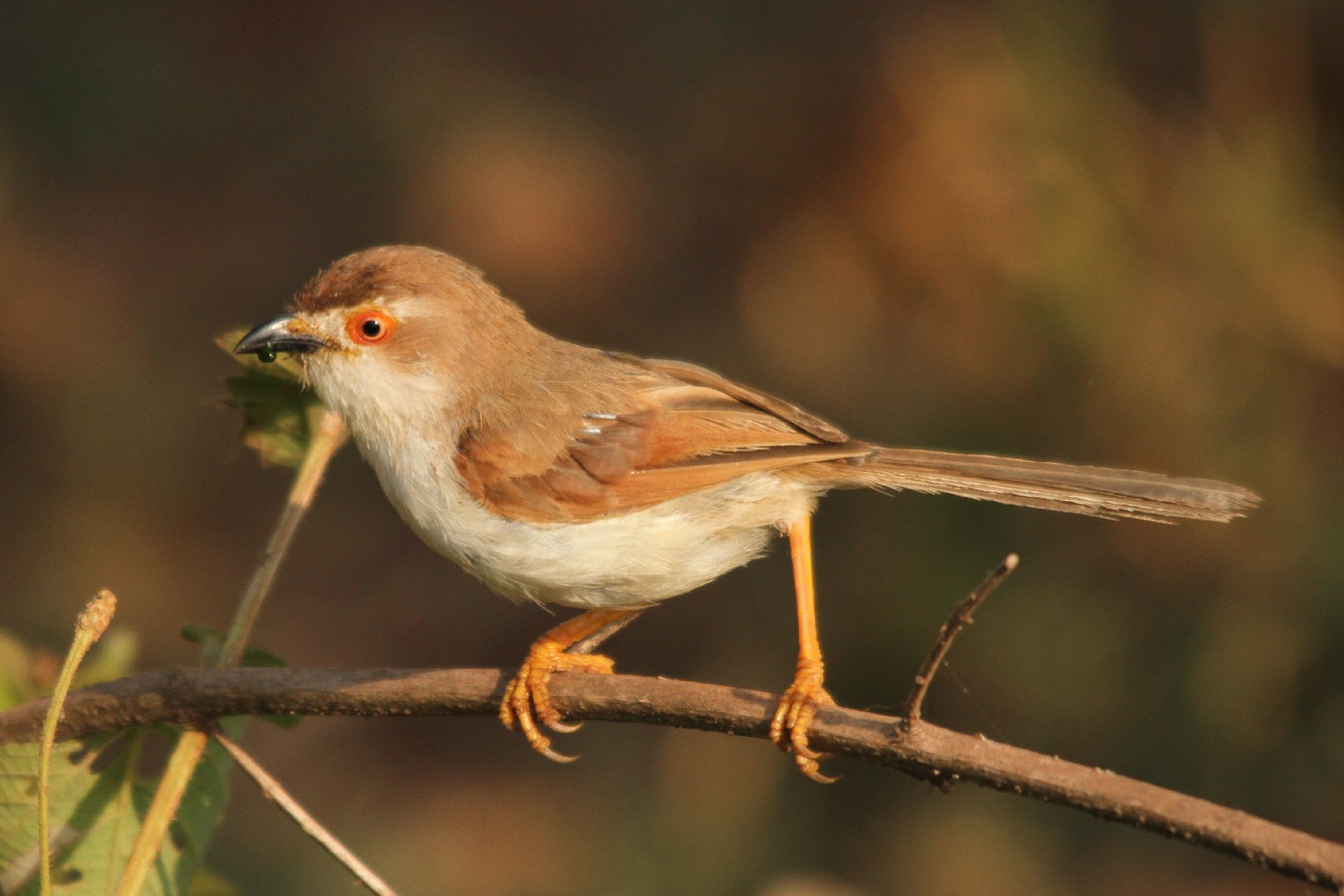Yellow-eyed Babbler
A species of Yellow-eyed Babblers and Allies Scientific name : Chrysomma sinense Genus : Yellow-eyed Babblers and Allies
Yellow-eyed Babbler, A species of Yellow-eyed Babblers and Allies
Botanical name: Chrysomma sinense
Genus: Yellow-eyed Babblers and Allies
Content
Description General Info
 Photo By Davidvraju , used under CC-BY-SA-4.0 /Cropped and compressed from original
Photo By Davidvraju , used under CC-BY-SA-4.0 /Cropped and compressed from original Description
The yellow-eyed babbler is about 18 centimetres (7.1 in) long with a short bill and a long graduated tail. The body above is brown and the wings are cinnamon coloured. The lores and supercilium are white and the rim of the eye is orange-yellow in adult birds. The beak is black. The underside is whitish buff. The central tail feathers are about twice as long as the outermost. The sexes are indistinguishable in the field. Within its wide distribution range there are some differences in plumages between populations that have been considered as subspecies. The nominate subspecies is found in Burma, Laos and Thailand. The population in Sri Lanka, nasale, has black nostrils and a stouter bill. The population across much of India, hypoleucum, has yellow nostrils (as with the nominate subspecies) and is paler in plumage. The population in the northeast Duars of India has an almost slaty crown and darker wings and has been called as saturatius or saturatior but this is considered as clinal variation and included in the nominate population. 
Size
23 cm
Nest Placement
Shrub
Feeding Habits
Yellow-eyed Babbler primarily feeds on caterpillars, grasshoppers, other insects, spiders, berries, and nectar. It forages in groups, often with prinias, and displays unique clinging and clamoring behaviors on twigs and reeds, rarely going to the ground.
Habitat
The yellow-eyed Babbler inhabits scrublands, grasslands, and wet fields in South and Southeast Asia's lowlands up to 1500 meters. It thrives in areas with thick vegetation like scrub-covered ravines, bamboo thickets, and reedbeds. Additionally, it occupies edges of agricultural lands and occasionally ventures into gardens, avoiding dense forests.
Dite type
Insectivorous
General Info
Feeding Habits
Bird food type
Behavior
Like babblers, these birds are usually seen in small groups of five to fifteen, especially in the non-breeding season. They are usually found inside bushes, emerging up to the top of a stem and then diving back into cover to forage. They feed mainly on insects but take berries (Lantana and Salvadora) as well as nectar. When capturing insects, they may hold them down with their feet. The group constantly produces a series of cheeping or churring calls. During the breeding season, mainly the southwest monsoon (June to August) but sometimes during the receding monsoon, the song is a strong whistling twee-twee-ta-whit-chu, often delivered from a prominent perch. The colour of the inside of the mouth is said to turn from orange-brown to black during the breeding season. They appear to nest cooperatively, the nest being a deep cone made with grass and lined with fine fibre. The nest is wedged between upright stems, the vertical stems being incorporated into the wall of the nest. The outside of the nest is well covered in cobwebs. The usual clutch is four but varies from three to five. The eggs are pinkish white with chestnut-red patches. Both parents take part in incubation and feeding the young. The eggs hatch after about 15–16 days and the young birds fledge after about 13 days. Adult birds have been seen feigning injury presumably to detract predators. Birds roost communally in the centre of a bush, all facing in the same direction and sitting side by side. Members of a group will preen each other. In an apparent territorial display, a pair of birds were found to sing while facing another singing pair and they all simultaneously bobbed their heads while perching on legs held straight to appear tall. Shikras may sometimes attempt to prey on these birds. Known in parts of northern India as gulab chashm meaning "yellow spectacles", they were sometimes kept as cagebirds. 
Distribution Area
The range of the yellow-eyed babbler extends from Pakistan through India, Nepal, Sri Lanka to Bangladesh, Myanmar, Thailand, Laos, Viet Nam and China. The usual habitat is grassy or thorny scrub both in dry and wet regions as well as farmland. It occurs mainly on the plains but also in the lower hills 1200 m. It is absent in the dense forest region of the Western Ghats and occurs only on the eastern edges or in gaps such as at Palghat. 
Species Status
Not globally threatened.
Scientific Classification
Phylum
Chordates Class
Birds Order
Perching birds Family
Sylvia babblers Species
Yellow-eyed Babbler